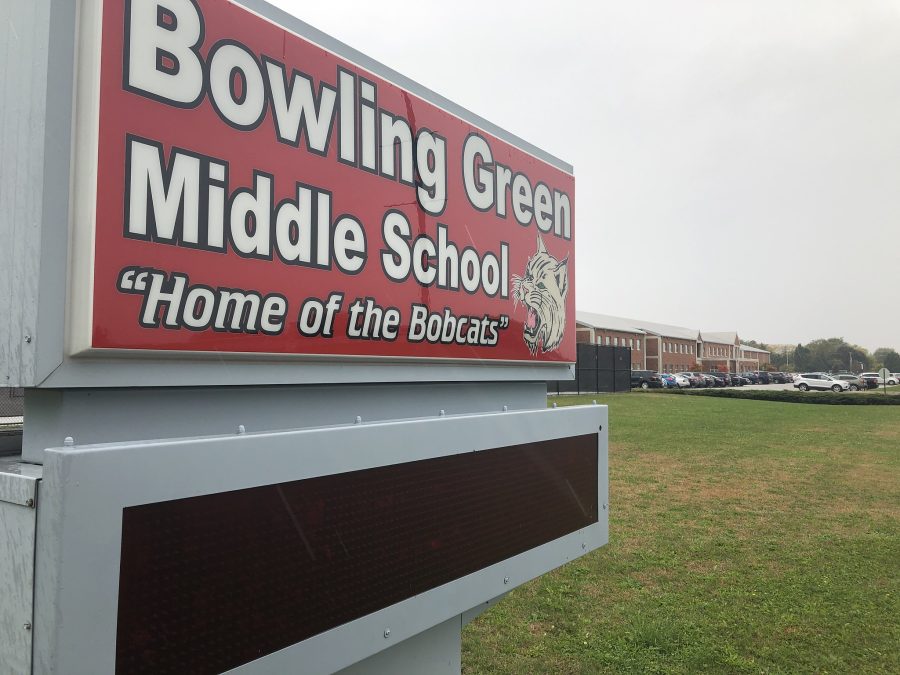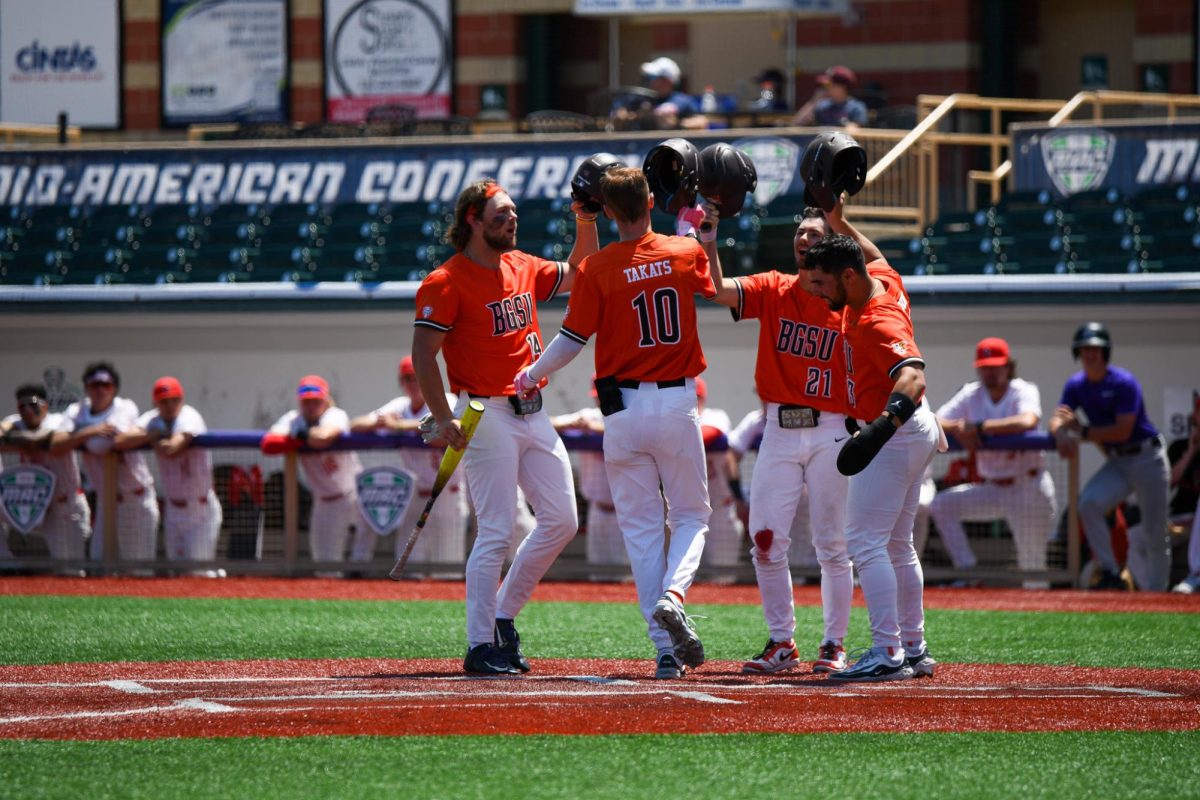Buried in bills? Chances are you’re not alone. The slowing of the nation’s economy and increasing college tuitions are racking up the dollar signs for students who take out loans to pay for college.
The New York Times reported in January that there’s been a significant rise in educational debt. The number of students who take out loans to cover the costs of tuition has risen in the past ten years, from 46 to 70 percent of high school seniors. Conrad McRoberts, interim director of financial aid and senior research associate in the Office of Institutional Research, said that a similar trend has been seen at BGSU.
“There are more students borrowing at BGSU today,” McRoberts said. “What is happening nationally is being reflected here and the number of borrowers has gone up.”
As costs keep going up, loans keep going up. In the past, a student that needed to borrow money could get enough from the federal loans. Today, however, the maximum amount of loans students can borrow hasn’t increased, so students have to borrow from other sources.
McRoberts explains that there is a set of programs called third-part lenders or private loan programs where students are not borrowing federal dollars through any of the federal student loan programs, but are borrowing from private banks.
“That volume has gone up significantly,” he said. “Students are borrowing the federal loans they can get and then on top of that they are borrowing several thousand dollars more per year to get all the money they need to attend school.”
Norm Bedford, associate director of student financial aid, said that right now the average of private loans at BGSU is at $14 million and by the end of the year could average $14.5 million. This is up from $9 million the previous year and $7 million from the year before.
In their trek through college and beyond, student borrowers now accumulate an average of $27,600 in educational debt, almost three and a half times what they compiled a decade ago, according to a national survey by Nellie Mae, the student loan company.
Average aggregate indebtedness for the University’s undergraduate students is $19,860, a third less then the national average. According to McRoberts, that has continued to increase. Approximately five years ago the average was only $12,000 to $13,000.
“Based on last year’s data, there are approximately 11,000 or 12,000 undergraduate students borrowing loans,” McRoberts said. “That’s a pretty good percentage of our total student population.”
To counteract indebtedness, Brown University eliminated work study for freshman and has instead chosen to give out scholarships. Princeton University has reduced the number of loans it gives out in favor of distributing more grants. Harvard University has increased its financial aid budget by $17 million in the past five years.
“Brown, Princeton and other private schools are able to do so because they have substantial endowments, way more than public institutions such as Bowling Green State University,” McRoberts said. “Student loans at Bowling Green are the largest source of financial assistance available to students.”
With a total loan volume for undergrads at this University exceeding $25 million annually, there is no way the University would have the resources to cover this amount. However, the University does have a foundation that contributes close to a million dollars yearly to student financial aid.
When considering that tuition and fees at private and public universities have more than doubled in the last two years, it seems inevitable that grants must also increase; however, they have “not nearly kept pace with the cost of higher education,” the New York Times reported.
“The truth is, it’s a lot easier to increase loans than grants,” said Ken Redd, research director of the National Association of Student Financial Aid Administrators, in the Times. “Until now, those loans have been a very good investment, but the concern I hear now is, ‘With the economy the way it is, how long is that going to last?'”
In past years, the University’s largest source of revenues was state subsidy. About 10 percent of the University’s revenues each year comes from other sources such as grants and contributions. Another main source of revenue comes from student tuition and fees. As the economy has become tighter, most of the University’s revenue comes from student fees.
“If the economy continues on the way it’s going right now and the job market doesn’t get any better, when these students graduate and have all this debt, how are they going to pay this off?” McRoberts said.
“Beyond the concern that low-income students won’t go to college, a bigger concern is that they will keep their debt down by working more hours during school,” said Donald E. Heller, senior research association at the Center for the Study of Higher Education at Pennsylvania State University, in the Times. “Working too many hours is one of the biggest factors in terms of not getting a degree.”
“Indebtedness was becoming more and more of an issue,” said William Wright-Swadel, director of career services at Harvard, in the Times. “We kept hearing, ‘I’m going to go work in industry for a few years, then I will return to what I care about.’ Frankly I’m not sure how many of them were able to make the return trip.”
McRoberts said that there is a concern that some students may even be influenced in their major selection because of the debt they may have later.
“Some people are making career choices based on the ability to pay off all the loans they have to take on in school,” McRoberts said. Credit card debt and the related finance charges are also often experienced for the first time in college, considering that some students choose to charge their school bills to a credit card. However, consumer advocates and financial aid planners would recommend using a regulated student loan as the best option to pay large school fees, instead of a credit card. News of increased educational debt should not turn students away from loans, however.
“Without student loans a lot of our students wouldn’t be here,” McRoberts said. “We don’t want to see students borrowing more, but we don’t have any good alternatives at this point and time.” On the brighter side, college graduates can expect to earn $1 million more during their careers than those with a high-school diploma in tow, the College Board says, and advanced degrees are worth even more. Student loan companies add that interest rates are unusually low, so that even with more debt, borrowers may not carry higher monthly payments.
Default rates are also at historically low levels, down to 5.9 percent in the fiscal year 2000 from 22.4 percent in 1990. The Department of Education attributes the trend to aggressive enforcement by universities, private lenders and federal officials to track down negligent borrowers and to get them to pay up.
Bowling Green State University students have an outstanding record of repaying loans. Their default rate is near 3 or 4 percent, according to McRoberts.
“We have been among the lowest default rates around,” McRoberts said.

















